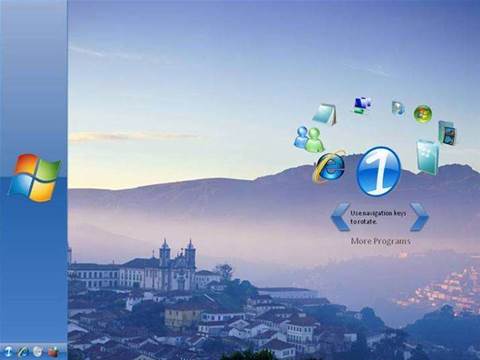Alongside the technical process of migration is the trouble expected from users unfamiliar with the new operating system.
The majority of enterprises have not upgraded their operating systems in five years so it is fair to say that this migration is a daunting task - even Microsoft has warned its enterprise customers recently that the migration path won't be easy.
Sean Walsh, general manager AppSense A/NZ, speaks to CRN about how user environment management solutions can help ease the migration fear.
CRN: Why are IT managers already beginning to feel uneasy about the Windows 7 upgrade
Walsh: Although the industry is excited about the launch, IT managers are all too aware that rolling out a new operating system will inevitably result in some backlash from users.
It has been several years since most organisations had to implement a new operating system for the majority of their desktop infrastructure, but few IT managers will have forgotten that migrating to a new platform can open a Pandora's box of issues if the migration is not managed correctly.
It is perhaps fair to say that the fear of overcomplicating processes and the threat of user backlash contributed to the decision for many organisations to avoid upgrading to Windows Vista, but now that Windows 7 is just on the horizon, it seems an operating system upgrade is finally due.
CRN: How will it affect their IT systems
Walsh: Upgrading to a completely new platform can have a massive impact on existing IT systems. Alongside its many benefits, Windows 7 presents its own risks and challenges.
It is difficult to predict how users will react when faced with a new interface which changes application compatibility, driver stability and performance.
From an IT manager's perspective, the upgrade also introduces a whole subset of management tools which need to be assessed and tested.
CRN: What technical process of migration is required
Walsh: There are a number of tools already available to deal with the management and deployment of the new operating system and assist with compatibility issues, but these tools almost entirely ignore the critical issue of user data and settings - something which has traditionally been lumped together and dealt with poorly.
CRN: What trouble do you foresee from users unfamiliar with the new operating system
Walsh: The mere fact that users will be facing a different GUI environment is bound to create some user acceptance issues.
More importantly, I think organisations underestimate the amount of downtime required for a user to configure all their applications and settings from scratch on the new operating system.
It is not unreasonable for a user to spend a full day or more upgrading and configuring a new operating system they are unfamiliar with.
In addition, most organisations will find that some employees really struggle to familiarise themselves with the new operating system so it is not unusual for them to need dedicated IT support on site to ensure the job can be completed.
CRN: Why haven't the majority of enterprises not upgraded their operating systems in five years or so and why is this migration a daunting task
Walsh: Not only can an operating system upgrade be painful for users, but it can also be very expensive - especially if has been a while since an organisation rolled out a new operating system or if it is not familiar with SOE deployment.
Basically, the general consensus seems to be that it is safer and easier to stick to what you know unless there is a strong business proposition for making a change.
It seems that many of the 'kinks' in Windows Vista have been ironed out and Windows 7 really does present a way to improve and simplify operations if the migration process is handled correctly.






.png&h=142&w=230&c=1&s=1)

_(21).jpg&h=142&w=230&c=1&s=1)



.jpg&w=100&c=1&s=0)
_(8).jpg&w=100&c=1&s=0)










